Introducción
En esta colorida era digital, pantallas de visualización LED Ilumina cada rincón de anuncios comerciales, conferencias y exposiciones con su encanto único.
Sin embargo, como las demandas de las personas en cuanto a efectos de visualización están aumentando, las pantallas individuales tradicionales ya no pueden satisfacer el deseo de todos de interacción y diversión.
Por eso, surgió la pantalla LED interactiva de doble pantalla. Es como una brisa fresca que aporta nueva vitalidad y posibilidades al mundo de las pantallas. Hoy, desvelemos su misterio y veamos los métodos de implementación y las maravillosas aplicaciones que hay detrás de ella.
1. ¿Qué es la interacción de doble pantalla de las pantallas LED?
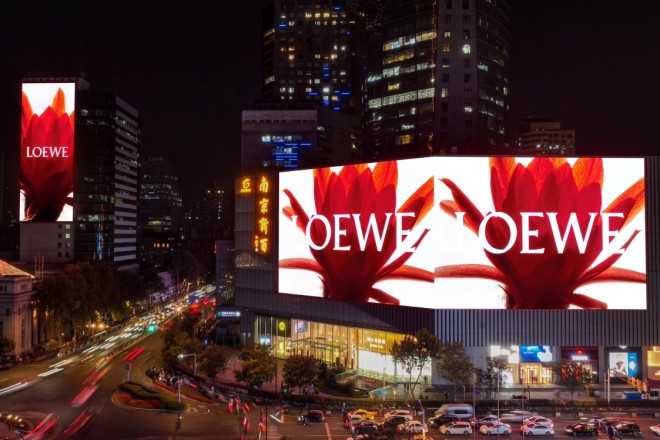
La interacción de doble pantalla de las pantallas LED se refiere a la interacción o colaboración de dos o más pantallas LED en el contenido de la pantalla, mostrando conjuntamente el mismo tema o información relacionada y pudiendo lograr efectos interactivos entre pantallas.
Esta tecnología suele implementarse a través de sistemas de software y dispositivos hardware específicos para que las dos pantallas puedan transmitir información en tiempo real, visualizarse de forma sincronizada o realizar operaciones interactivas.
Tomando como ejemplo la interacción entre dos enormes pantallas LED en la plaza Huangxing de Changsha el día de San Valentín, este es un escenario de aplicación típico de interacción de doble pantalla de pantallas LED.
Las dos pantallas pueden mostrar contenidos diferentes respectivamente, pero la sincronización o interacción de la información se logra a través de algún medio (como red inalámbrica, sistema de control, etc.), creando así un efecto visual más vívido e interesante, atrayendo la atención de la audiencia y mejorando su sentido de participación.
1) Análisis del efecto de la tecnología interactiva de doble pantalla
- Mejora significativa de los efectos visuales:
La tecnología interactiva de doble pantalla puede crear efectos visuales más impactantes a través del trabajo colaborativo de dos pantallas.
Por ejemplo, en una actuación o exposición, una pantalla puede utilizarse como pantalla principal. escenario fondo y la otra pantalla como área interactiva.
Al reproducir de forma sincronizada imágenes o animaciones relacionadas, se puede crear una atmósfera de interpretación más realista y tridimensional.
- Diversificación y eficiencia de la comunicación de la información:
La tecnología interactiva de doble pantalla no solo puede mostrar la información principal en una pantalla, sino que también proporciona información complementaria o instrucciones detalladas en la otra pantalla.
Este método de visualización no solo ayuda a la audiencia a comprender mejor el contenido de la información, sino que también mejora la eficiencia y la precisión de la comunicación de la información.
Al mismo tiempo, a través del diseño flexible y el ajuste de contenido de las dos pantallas, puede satisfacer las necesidades de visualización en diferentes escenarios y brindar una experiencia visual más rica a la audiencia.
2. Método de implementación de la interacción de doble pantalla de la pantalla LED
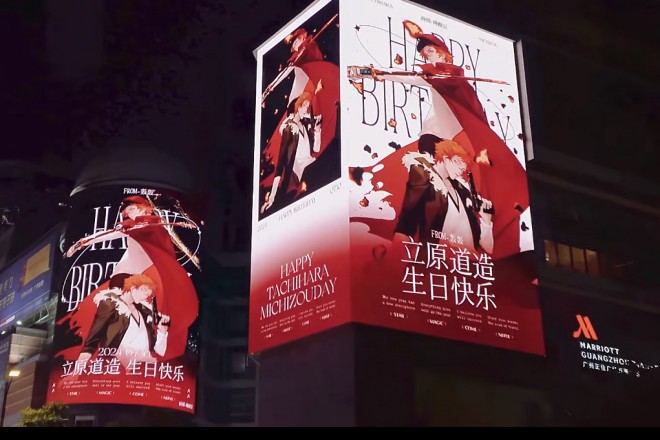
1) Conexión del dispositivo:
Para que las dos pantallas LED sean interactivas, primero hay que “conectarlas”. Hay dos formas principales:
Una es a través de cables reales, como cables HDMI, cables DVI, etc., que son como autopistas de información que transmiten datos de un dispositivo a otro.
La otra es utilizar tecnología inalámbrica, como Wi-Fi o Bluetooth, que es más flexible y no está limitada por cables, pero es posible que deba prestar atención a la intensidad y estabilidad de la señal.
Independientemente del método que utilicemos, debemos asegurarnos de que la conexión sea estable y la transmisión de datos sea rápida para garantizar que la sincronización de la información entre las dos pantallas no se retrase ni se bloquee.
2) Instalación y configuración del software:
A continuación, necesitamos instalar un software especial en el dispositivo de control principal: software de interacción de pantalla dual.
Este software es como el “comandante” de las dos pantallas. Es responsable de manejar toda la transmisión de información, la visualización sincrónica y la lógica interactiva.
Después de instalar el software, también necesitamos realizar una serie de configuraciones, como configurar la pantalla resolución, frecuencia de actualización, etc., para garantizar que las dos pantallas puedan funcionar perfectamente juntas y presentar los mejores efectos visuales.
Estas configuraciones son como “personalizar” un conjunto de instrucciones para que el software sepa cómo controlar mejor las dos pantallas.
3) Producción y subida de contenidos:
Con el “esqueleto” de conexión y software, el siguiente paso es rellenar el “alma”. Podemos producir diversos contenidos gráficos, de audio y de vídeo según las necesidades de la pantalla.
Estos contenidos no solo deben ser atractivos sino también interactivos para que la audiencia se sienta involucrada en el proceso de visualización. Una vez finalizada la producción, podemos subir el contenido a la plataforma de software.
El software procesará automáticamente estos contenidos y los distribuirá en las dos pantallas. Para garantizar la precisión y el tiempo real de los contenidos, el software también ofrece dos mecanismos, la sincronización automática y la actualización manual, para que podamos elegir según la situación real.
4) Visualización y control:
El último paso es controlar el contenido y el modo de visualización de las dos pantallas a través del dispositivo de control principal. Podemos elegir qué contenido mostrar, cómo distribuirlo y qué efectos de animación agregar.
Más importante aún, también podemos configurar diferentes modos interactivos. Por ejemplo, después de hacer clic en un botón en la pantalla A, la pantalla B mostrará el contenido correspondiente o realizará una acción específica.
Este tipo de interacción no solo hace que la exhibición sea más interesante, sino que también permite que el público participe más profundamente en ella y mejore su experiencia. Es como agregar un par de “ojos” y “oídos” a las dos pantallas, lo que les permite “ver” y “escuchar” las necesidades del público y responder en consecuencia.
3. Escenarios de aplicación de la interacción de doble pantalla de las pantallas LED
Como método interactivo novedoso y atractivo, la interacción de pantallas LED con dos pantallas se ha utilizado ampliamente en múltiples lugares de entretenimiento y ocasiones específicas. A continuación, se presentan algunos escenarios de aplicación específicos:
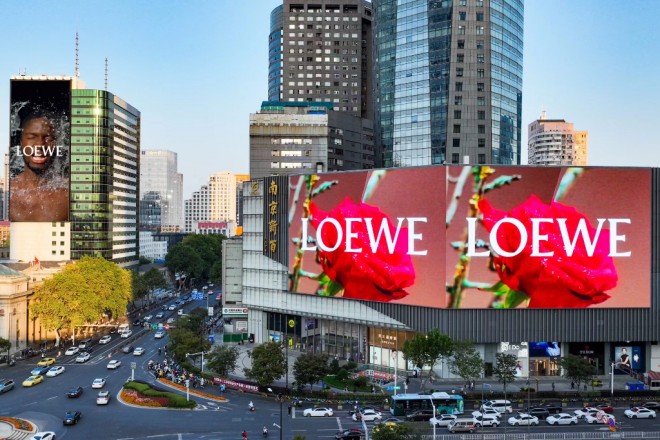
1) Lugares de entretenimiento
Con la tecnología interactiva de doble pantalla, los bares pueden crear una atmósfera única. Por ejemplo, una pantalla reproduce videos musicales o presentaciones en vivo, mientras que la otra muestra letras de canciones, juegos interactivos o mensajes para los clientes, lo que aumenta la sensación de participación y la experiencia de entretenimiento de los clientes.
- Conciertos
En el lugar del concierto, se puede utilizar tecnología interactiva de doble pantalla para mostrar información del cantante, desplazarse por las letras y la interacción con el público.
Una pantalla reproduce las actuaciones en directo y la otra ofrece enlaces interactivos, como votaciones del público, desplazamiento de mensajes, etc., para mejorar la interactividad y la visualización del concierto.
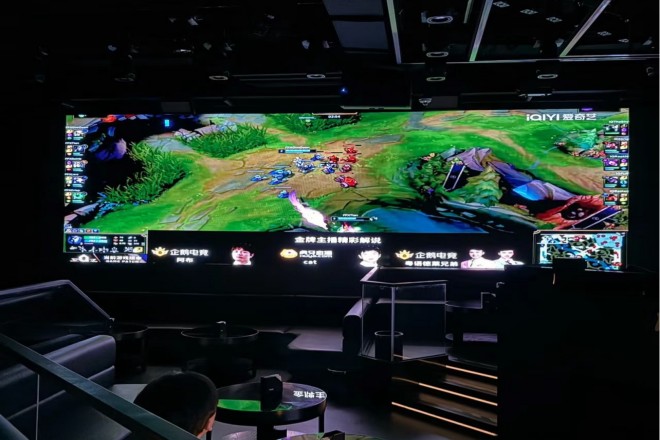
2). Centros comerciales y celebraciones del festival
Los centros comerciales a menudo utilizan tecnología interactiva de doble pantalla para atraer clientes durante los festivales (como el Día de San Valentín, el Festival del Medio Otoño, Navidad, etc.).
Una pantalla muestra anuncios o promociones con temas festivos, mientras que la otra pantalla ofrece experiencias interactivas, como escanear códigos para participar en sorteos, recibir cupones, etc., para aumentar la diversión y la participación de los clientes en las compras.
- Celebraciones festivas
Durante diversas celebraciones de festivales, se puede utilizar tecnología interactiva de doble pantalla para mostrar información como la cultura del festival, los antecedentes históricos y el flujo del evento.
4. Desafíos técnicos y soluciones para la interacción de pantallas LED en dos pantallas
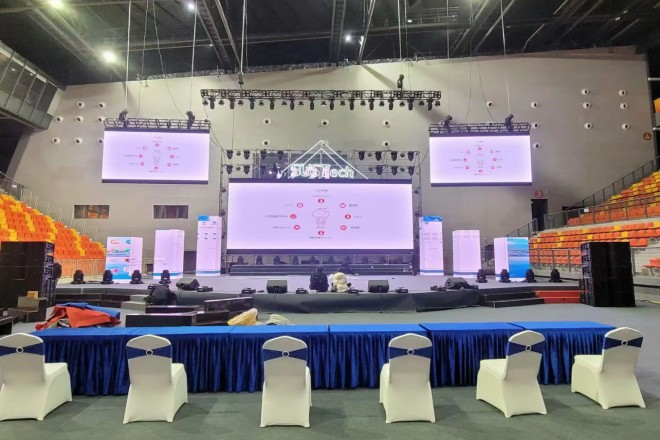
1) Sincronización de contenidos entre pantallas
En la interacción de doble pantalla de las pantallas LED, es crucial garantizar que el contenido que se muestra entre dos o más pantallas esté sincronizado en tiempo real.
Sin embargo, debido a factores como retrasos en la transmisión de datos y diferencias en el rendimiento del dispositivo, el contenido entre pantallas puede estar desincronizado.
- Impacto:
La asincronía de contenido reducirá la experiencia visual de la audiencia y puede incluso generar malentendidos o confusión de información.
2) Claridad de la lógica de interacción
La interacción de doble pantalla de las pantallas LED requiere el diseño de una lógica de interacción clara para garantizar que los usuarios puedan cambiar e interactuar fácilmente entre las dos pantallas.
Sin embargo, debido a las diferencias en el tamaño de la pantalla, la resolución, el modo de operación, etc., puede resultar difícil diseñar una lógica de interacción clara.
- Impacto:
Una lógica de interacción poco clara puede causar dificultades de operación del usuario y reducir la experiencia interactiva.
3) Transmisión y estabilidad de datos
En la interacción de doble pantalla de las pantallas LED, es necesario garantizar que los datos se transmitan de manera estable y rápida entre las dos pantallas.
Sin embargo, debido a factores como retrasos en la red y fallas de los equipos, la transmisión de datos puede ser inestable o interrumpida.
- Impacto:
La transmisión de datos inestable afectará la fluidez y el rendimiento en tiempo real de la interacción de doble pantalla.
4) Solución
4.1) Optimizar el algoritmo del software
Al optimizar el algoritmo del software, se puede mejorar la precisión y el rendimiento en tiempo real de la sincronización de contenido entre pantallas.
Por ejemplo, se pueden utilizar medios técnicos como el algoritmo de sincronización de marca de tiempo y el algoritmo de sincronización de cuadros para garantizar la sincronización de contenido entre pantallas.
El algoritmo de software optimizado puede reducir significativamente la probabilidad de asincronía del contenido y mejorar la experiencia visual de la audiencia.
4.2) Aumentar la velocidad de transmisión de datos
Al aumentar la velocidad de transmisión de datos, se puede garantizar que la transmisión de datos en la interacción de doble pantalla sea más estable y rápida.
Por ejemplo, se pueden utilizar medios técnicos como una interfaz de red de alta velocidad y un protocolo de transmisión de datos optimizado para aumentar la velocidad de transmisión de datos.
Aumentar la velocidad de transmisión de datos puede reducir significativamente los retrasos e interrupciones en la transmisión de datos y mejorar la fluidez y el rendimiento en tiempo real de la interacción de doble pantalla.
4.3) Mejorar el rendimiento y la estabilidad del dispositivo
Al mejorar el rendimiento del dispositivo (por ejemplo, aumentando la velocidad del procesador, aumentando la capacidad de memoria, etc.) y la estabilidad (por ejemplo, adoptando un diseño redundante, mejorando la disipación de calor, etc.), se puede garantizar la estabilidad y confiabilidad de los dispositivos interactivos de doble pantalla durante el funcionamiento a largo plazo.
Mejorar el rendimiento y la estabilidad del dispositivo puede reducir las fallas del dispositivo y la degradación del rendimiento y mejorar la confiabilidad y durabilidad de la interacción de doble pantalla.
Conclusión
En resumen, la pantalla LED interactiva de doble pantalla no solo logra la visualización sincrónica de información a través de un diseño inteligente y la innovación tecnológica, sino que también hace que la interacción sea simple e interesante.
Si bien existen algunos pequeños desafíos en el camino hacia la perfección, como la precisión de la sincronización de contenido y la fluidez de la lógica interactiva, estos son solo pequeñas piedras en el camino por delante.
Finalmente, si quieres saber más sobre las pantallas LED, Por favor póngase en contacto con nosotros.
